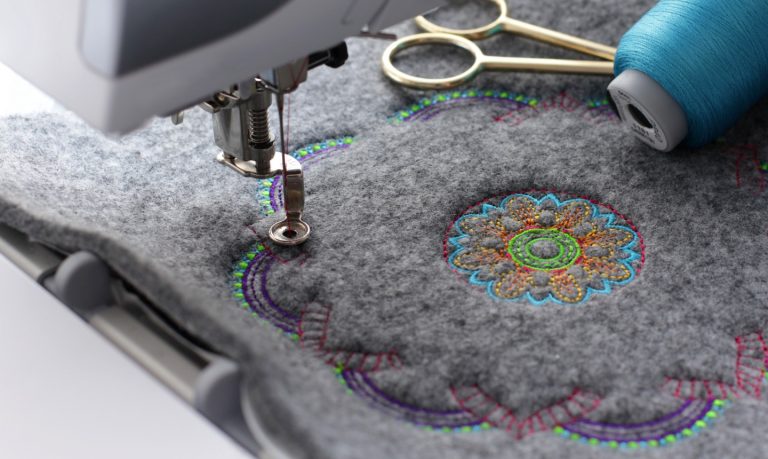Cost Effective Digitizing for Embroidery: Accuracy and Information
Cost Effective Digitizing for Embroidery: Accuracy and Information
Blog Article
Mastering the Embroidery Digitizing Refine: Your Ultimate Overview
Needlework digitizing is a precise craft that calls for precision and experience to convert complex styles right into electronic layouts for equipment needlework. As artisans embark on this journey to grasp the embroidery digitizing procedure, a thorough understanding of the fundamentals sets the structure for excellence.

Understanding Embroidery Digitizing Basics
Needlework digitizing basics create the foundation whereupon intricate layouts are converted into machine-readable styles for specific stitching. This preliminary action in the embroidery digitizing process is crucial for making certain that the final embroidered product is a faithful depiction of the initial style. Understanding needlework digitizing fundamentals includes grasping crucial ideas such as stitch kinds, sew instructions, thickness, underlay, and draw compensation.
Sew types play a vital duty in establishing the aesthetic and textural outcome of the stitched style. By choosing the appropriate stitch kind, whether it be satin, fill, or running stitch, digitizers can attain the preferred impact and enhance the overall top quality of the embroidery. Additionally, sew direction affects the circulation and dimension of the layout, while thickness figures out the spacing and coverage of the stitches.
Furthermore, underlay sewing supplies stability to the layout by securing the material and avoiding distortion throughout the embroidery process. Pull compensation is one more crucial consideration to combat the natural tendency of material to contract when sewn. Mastering these needlework digitizing essentials is essential for developing professional-quality stitched items.
Choosing the Right Digitizing Software
Choosing the appropriate digitizing software is a vital choice that dramatically affects the effectiveness and high quality of the embroidery digitizing procedure. Digitizing for Embroidery. When picking the ideal digitizing software application, it is crucial to think about factors such as the intricacy of styles you intend to produce, the user-friendliness of the software, the degree of client assistance used, and the compatibility with your embroidery maker
There are various digitizing software program options available on the market, varying from fundamental programs for novices to sophisticated software program for professional digitizers. Some popular selections include Wilcom EmbroideryStudio, Hatch Needlework Software Application, and PulseID. These software provide a large range of tools and attributes to help you produce intricate layouts easily.
Before choosing, it is recommended to check out the different software options through totally free trials or demonstrations to identify which one best matches your needs. Additionally, checking out testimonials and seeking recommendations from knowledgeable digitizers can provide useful insights browse around these guys into the staminas and weaknesses of each software (Digitizing for Embroidery). By meticulously assessing your demands and comparing the features of different digitizing software program, you can make an informed option that improves your needlework digitizing workflow
Digitizing Tools and Techniques

Optimizing Style Settings for Needlework
Understanding the ins and outs of design setups is basic in achieving ideal outcomes in the needlework digitizing process, structure upon the structure laid by understanding digitizing tools and strategies. When maximizing style settings for blog here embroidery, it is necessary to consider factors such as stitch type, density, rug, pull settlement, and enrollment. Enrollment settings align various components of the design properly, preserving general layout integrity.

Troubleshooting Common Digitizing Issues
When running into typical digitizing problems throughout the needlework procedure, it is vital to recognize the origin and carry out effective options immediately. One usual trouble is stitch density concerns, where stitches might be also dense, triggering the textile to pucker, or also sporadic, resulting in gaps in the style. Readjusting the stitch density settings in the digitizing software can aid fix this concern.
One more regular challenge is thread breaks throughout the needlework webpage procedure. This can take place as a result of numerous reasons such as wrong tension settings, plain needles, or using low-quality string. Guaranteeing proper maintenance of the needlework machine, consisting of normal needle modifications and stress modifications, can lessen the event of thread breaks.
Furthermore, design registration mistakes can result in misaligned components within the embroidery style. Inspecting the layout placement in the digitizing software and making needed modifications before stitching can help in avoiding this problem. By addressing these common digitizing concerns quickly and successfully, you can make sure a smoother embroidery process and premium finished products.
Final Thought
In final thought, grasping the needlework digitizing process requires a strong understanding of the essentials, the appropriate option of software program, and understanding of devices and techniques. Optimizing layout setups and repairing typical digitizing issues are important action in making certain premium needlework results. By adhering to these steps vigilantly, one can attain precision and performance in the digitizing procedure.
Report this page